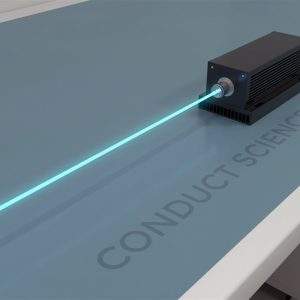The general testing parameters of response rates are calculated as follows.
$5,990.00
The Zebrafish choice chamber from MazeEngineers enables experiments akin to the widely used five-choice serial reaction time task (5-CSRTT). When testing commences, lights activate and the gate opens. A food dispenser delivers rewards according to a fixed schedule. Proper illumination persists until the correct entry or for a defined interval. Data typically encompass trial counts, accuracy rates, omissions, and latency. This chamber features an automated gate, proximal and distal lighting, and is managed via Conductor Software for controlling lights and gates.

MazeEngineers empowers preclinical neuroscience research with meticulously designed, customizable behavioral apparatuses. From manual classic mazes to fully automated smart systems, we provide the tools scientists need to capture high-quality, reproducible data for studies on learning, memory, anxiety, and depression.



Features |
Overall Length: 36cm |
Automated Gate |
Length From Start area: 21 cmm |
Length from Stimulus Area: 15cm |
Acrylic five-choice maze with five apertures |
Color Reward light (red; green; blue; yellow; and white) |
Auto door |
Water tank |
Control box |
Zebrafish pellet dispenser |
Software |

Zebrafish conditioned place preference (CPP) is a popular method for evaluating the rewarding effects of various food substances and psychoactive compounds. This task assesses the positive-reinforcing effects by measuring the zebrafish’s preference for an environment that was previously associated with a particular substance.
The CPP paradigm leverages the zebrafish’s natural preference for black over white. In this assay, the primary stimulus acts as an unconditioned stimulus. When paired with a secondary stimulus (a visual cue) that functions as a conditioned stimulus, it induces an approach behavior towards the paired environment (Darland & Dowling, 2001).
The CPP procedure is typically divided into three phases. In Phase I, zebrafish can explore all compartments of the CPP tank freely, and the time spent in each compartment is recorded to establish a baseline preference. In Phase II, the fish are confined to each compartment and receive either the experimental or control treatment for a set period. During Phase III, zebrafish are again allowed to move freely between compartments, and the time spent in each is recorded to determine their final preference. CPP behavior is quantitatively assessed by subtracting the baseline preference recorded in Phase I from the final preference observed in Phase III.
Quantitative measure of CPP behavior = (Final place preference – Baseline place preference).
A significant shift towards the compartment conditioned with the experimental treatment indicates that the treatment is rewarding (Mathur et al., 2011).
Darland and Dowling were the trailblazers in developing the CPP behavior model for adult zebrafish (Darland & Dowling, 2001). They created an apparatus specifically to assess the addictive properties of various compounds. In their study, they initially recorded the baseline place preference, then confined the zebrafish to their least preferred compartment while exposing them to cocaine, and finally assessed the change in place preference to determine the effects.
The Zebrafish 5-Choice Chamber features a spacious tank measuring 42 x 49 x 15 cm and an inner custom-designed tank dedicated to testing. Built from opaque acrylic, the inner tank includes an automated door dividing it into distinct areas: the food magazine and the stimulus region. The use of opaque acrylic minimizes external visual distractions and reflections within the unit. The food delivery area is situated 21 cm from the gate, while the stimulus area is 15 cm away. Supporting the gate are two acrylic columns attached to the inner tank. The floor design facilitates waste and excess food removal while providing a contrasting background for effective video recording and monitoring.
The stimulus area is designed with a curved layout for optimal visual detection, partitioned into 5 slots with dividers. Each slot houses a stimulus LED emitting bright, distinct-colored light from the food magazine LED. Equipped with an LED light, the food magazine includes a slot for food delivery, positioned outside the testing tank.
This apparatus includes automation software for seamless control of lights and gate operations.
The subjects must be housed in tanks with stable temperature and pH levels, ensuring these conditions remain consistent throughout sessions to minimize stress or harm to the fish. Adequate aeration and water quality must also be maintained at all times. Automated tracking and video software, such as Noldus Ethovision XT or ANY-Maze, can facilitate behavior tracking and recording. Cameras positioned overhead provide comprehensive monitoring of fish movements and behaviors. Between each subject, it is essential to empty the tank and conduct thorough rinsing before subsequent use to maintain cleanliness and hygiene standards.
The pretraining and training procedures for the fish in the 5-Choice Chamber are as follows:
Before commencing training, subjects undergo a 30-minute acclimation period in the testing tank over a span of at least 7 days. It is crucial to maintain an undisturbed environment for the subjects during this phase. Throughout this period, the lights remain illuminated, and food is delivered according to a predetermined schedule.
Initiate magazine training by closing the divider door to confine the subject within the magazine area. Illuminate the magazine light in intervals of up to 10 seconds, with 30-second intervals, allowing the fish to access food within the magazine. Conduct five 30-minute sessions to establish the fish’s association between the magazine light and food delivery.
Start training by restricting the subject to the magazine area. After one minute, raise the gate to expose the five-stimulus area, ensuring all lights are continuously illuminated. When the fish enters a stimulus aperture, turn off the corresponding light and illuminate the magazine light. If the fish re-enters the food magazine, lower the gate to confine it to the food delivery area, delivering food once it enters the magazine. Repeat this process five more times within 30-minute sessions, allowing a 20-second interval between each trial.
Begin the 5-Choice Serial Reaction Time training (5-CSRTT) by confining the fish in the food delivery area for one minute. Raise the gate to allow access to the stimulus area. After a preset pre-stimulus interval (PSI) – the delay between the gate being raised and the stimulus light being illuminated – one of the five stimulus lights will turn on. If the fish correctly approaches the illuminated stimulus aperture within the 30-second window, the magazine light will turn on. Once the fish enters the food magazine, close the gate behind it and deliver the food, confining the fish in the food area for 20 seconds. If the fish fails to approach the correct stimulus (incorrect trial), does not respond within the 30-second duration, or approaches the aperture before the light is illuminated (anticipatory response), turn off the lights and confine the fish in the food area without food for 20 seconds.
For the experiment, four-month-old first-generation ENU mutagenized Tübingen long-fin fish were utilized in the 5-CSRT task. The subjects underwent 5-CSRT training with a 5-second PSI from weeks 4 to 8 and a 10-second PSI from weeks 9 to 11. Data from the magazine training indicated minimal increase in entries into the magazine during the light exposure period. During the stimulus light training, fish exhibited a steady increase in the number of reinforcers received. Throughout the 5-CSRTT period, a consistent increase in correct responses was observed during the 5-second PSI phase. Additionally, there was an increased latency in correct responses and a notable speed-accuracy trade-off. Comparing the last four days of each PSI session, a significant increase in correct responses was noted (Parker et al., 2013).
Adult, mixed-sex, wild-type (TU strain) zebrafish were used to investigate the effects of atomoxetine, a drug commonly prescribed for ADHD, on anticipatory responses in the 5-Choice Chamber task. The subjects received either atomoxetine (0.5 μM (0.15 mg/kg), 1 μM (0.3 mg/kg), and 2 μM (0.6 mg/kg)) or methylphenidate (5 μM (1.3 mg/kg), 10 μM (2.6 mg/kg), and 15 μM (4 mg/kg)). The drugs were dissolved in aquarium-treated water, and the subjects were incubated in these solutions 30 minutes before testing. The training was divided into three phases, with subjects advancing to the next phase only after successfully completing 20 or more trials per session for at least three consecutive days. Weeks 4 to 5 of 5-CSRT training had a PSI of 1 second, while weeks 6 to 9 used a PSI of 5 seconds. Subjects that met the criteria for the first two phases proceeded to the third phase, which included the drug trials. Atomoxetine showed a dose-dependent reduction in anticipatory responses, particularly at the 2 μM concentration, compared to baseline. Conversely, methylphenidate at 15 μM increased anticipatory responses relative to baseline (Parker et al., 2014).
The following data can be collected during the 5-Choice Chamber task.
The general testing parameters of response rates are calculated as follows.
The 5-Choice Chamber successfully modifies the traditional 5-Choice Serial Reaction Time Task (5-CSRTT) used in rodent studies for application with fish. Its automated features enhance throughput and reduce the need for investigator intervention during the task, thereby improving both the reliability and quality of the research. The design facilitates easy adjustment of the number and duration of stimuli to control attentional load as needed. Additionally, the opaque construction of the chamber minimizes external distractions. This apparatus holds significant promise for studies on hyperactivity, motor impulsivity, and related treatments.
Further refinement of the 5-Choice Chamber apparatus may be necessary. External disturbances such as noise, vibration, and visual stimuli can impact fish performance. Additionally, handling, habituation, and rearing environments play significant roles. Stress and anxiety can lead to inaccurate results and observations, so maintaining a constant tank temperature and stable environmental factors during testing is crucial. Ensuring the health of the fish is also important, as impulsivity and hyperactivity can be influenced by multiple factors. The task can be time-consuming, and result consistency across different labs may vary depending on the type and quantity of food used.
Parker MO, Millington ME, Combe FJ, Brennan CH (2012). Development and implementation of a three-choice serial reaction time task for zebrafish (Danio rerio). Behav Brain Res. 227(1):73-80. doi: 10.1016/j.bbr.2011.10.037.
Parker, M.O., Brock, A.J., Sudwarts, A., & Brennan, C.H. (2014). Atomoxetine reduces anticipatory responding in a 5-choice serial reaction time task for adult zebrafish. Psychopharmacology (Berl)231(13): 2671–2679. doi:10.1007/s00213-014-3439-z.
Parker, M.O., Ife, D., Ma, J., Pancholi, M., Smeraldi, F., Straw, C., & Brennan, C.H. (2013). Development and automation of a test of impulse control in zebrafish. Front Syst Neurosci. 7: 65. doi: 10.3389/fnsys.2013.00065.
Robbins TW (2002). The 5-choice serial reaction time task: behavioural pharmacology and functional neurochemistry. Psychopharmacology (Berl). 163(3-4):362-80.
| Length | 36cm |
|---|---|
| Material | Acrylic |
There are no questions yet. Be the first to ask a question about this product.